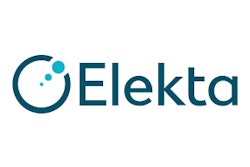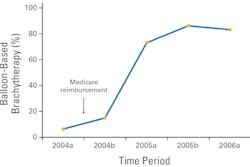Arteriovenous malformations (AVMs) can be deadly when located in the brain. Stereotactic radiosurgery with the Gamma Knife system, repeated as necessary, reduces the risk of AVM hemorrhage, attendees were told at the American Association of Neurological Surgeons (AANS) annual meeting this week in Denver.
Researchers from the University of Pittsburgh presented data on the outcomes of nearly 1,000 patients who had stereotactic radiosurgery (Gamma Knife, Elekta) performed from 1987 through 2006. Stereotactic radiosurgery was used when surgical excision was not feasible.
The treatment precisely focuses radiation on the arteriovenous malformation, causing the abnormal tangle of blood vessels to slowly block off over several years. The procedure reduces the risk of hemorrhage, which occurs in approximately four of every 100 patients who have the condition.
When a brain hemorrhage occurs, the outcome can be deadly (15% to 20% of the time) or debilitating, with a 15% to 20% risk of stroke, a 30% risk of neurological morbidity, and a 10% risk of other factors.
A single stereotactic radiosurgery treatment delivering 18 Gy of radiation produced successful results for 891 of the 996 patients, said Dr. Hideyuki Kano, PhD, a research assistant professor of neurological surgery. However, 105 patients, or about 10%, had incompletely obliterated malformations and required a second procedure. The majority of these patients were young, with a median age of 31 at the time of treatment.
The 105 patients had stereotactic radiosurgery with the same radiation dose repeated a median of 40.9 months after the initial treatment. The median AVM volume at the time of initial treatment was 6.4 cc, but it was reduced to a median of 2.3 cc at the time of the second procedure, Kano said.
Patients who had smaller residual target volumes and greater than 50% volume reduction after the initial treatment had higher rates of malformation oblivion. Initial volumes before treatment were as large as 26.3 cc, and residual volumes were as large as 18.2 cc at the time of the second procedure. Patients who never had a prior hemorrhage, 93% of this group, also had a greater success rate, according to Kano.
It took a median of 39 months for the AVM to be obliterated after the second treatment. The repeated treatment did not prevent brain hemorrhage from occurring in 17 patients (16%), and six of these patients died. However, Kano advised that the risks of delayed hemorrhage and death are reduced over time if repeat treatment is successful.



















